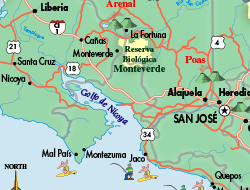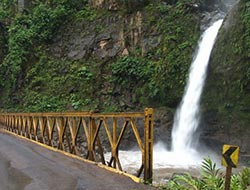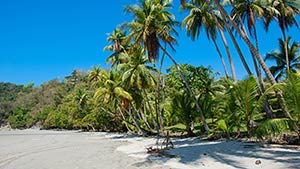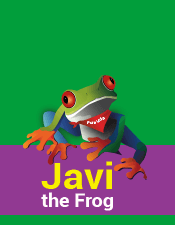Marvel at the bright colors of Costa Rica's poison dart frogs
Green Black Poison Arrow Frog in the forest at Carara National Park
One of the most colorful amphibians in Costa Rica is the poison dart frog, a group of species known for their brilliant hues and their toxic skin.
Where to See It
Poison dart frogs all belong to the scientific family Dendrobatidae, which contains more than 175 individual species spread across a range that includes large parts of Central and South America. Although this clade is remarkably diverse, just seven kinds of poison dart frog reside in Costa Rica - and only three of those species have the bright colors for which the family is most famous. Travelers in Costa Rica who want to see these animals can do so on a visit to Puerto Viejo de Talamanca, Puerto Viejo de Sarapiqui or Tortuguero National Park.
Dangerous Frog
In general, poison dart frogs are diurnal, meaning that they are most active during the day. Their diet includes ants and termites, and they primarily make their home in the dense rainforests of Costa Rica's lowlands. These animals get their name from the toxins produced by their skin. This poison serves as a natural defense mechanism, and any animal that eats a poison dart frog is likely to die as a result. Some native groups made use of this toxin to tip blowdarts with poison, using the frogs' means of defense for their own purposes. Poison dart frogs' trademark coloration serves as a warning, telling potential predators that the tiny amphibians are much more dangerous than they appear.
Unique Pattern
Perhaps the most famous species in Costa Rica is Oophaga pumilio, known coloquially as the strawberry poison dart frog or the blue jeans poison dart frog. These animals comes in a wide variety of colors. The most common is orange with black spots, causing the animal to resemble a strawberry. Another frequently spotted coloration pattern is orange with bright blue markings on the toes and legs, making the frog look as if it is wearing a pair of blue jeans.
Egg Eating
One unique feature of the strawberry poison dart frog is how it feeds its young. Females often lay unfertilized eggs in bodies of water where their tadpoles live, allowing the tadpoles to use the eggs as a source of nutrition. This unique behavior actually lends the species part of its scientific name, as "Oophaga" comes from the Greek word roots for "egg" and "eating."
7 Days / 6 Nights
Starting at $932 per person
10 Days / 9 Nights
Starting at $1,193 per person












.jpg)
.jpg)




